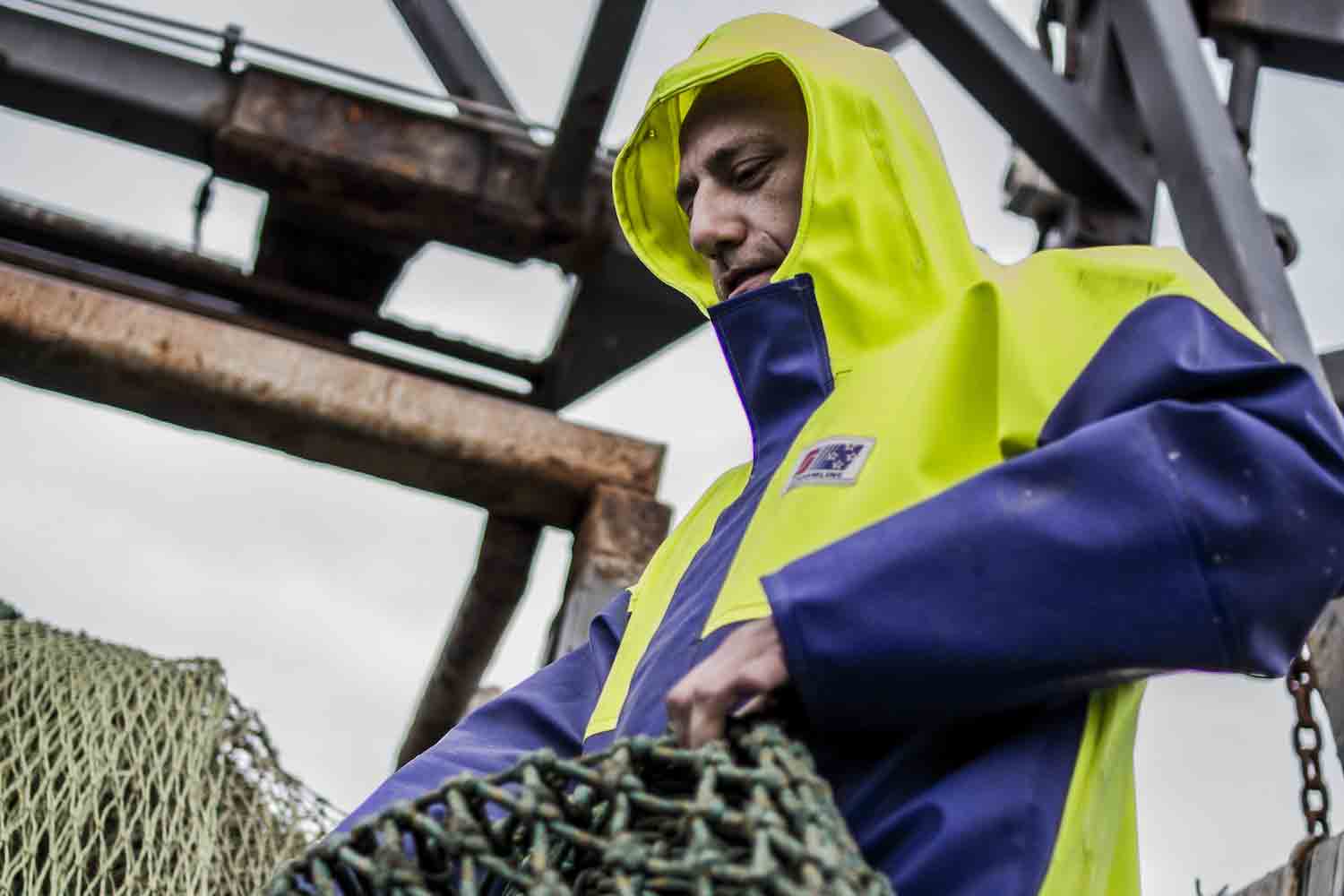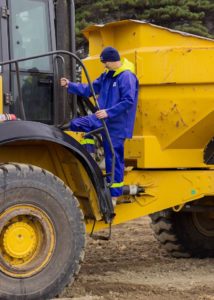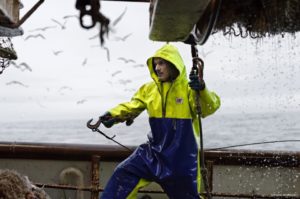The performance of your rain gear can make the difference between a good working day and a miserable one.
That’s why it makes sense to get clued up and know what things to look out for – before you head out in the morning. We want to keep things nice and simple: so here’s a quick overview to keep on file.
6. Weight
Whether you’ll be working in torrential rain, or spouts of drizzle, you’ll need to think about weight. Most likely, what you wear will change seasonally:
- Mid-weight 1.2kg (+/- 100g depending on your size)
- Light-weight 1.0kg (+/- 100g depending on your size)
However, for more challenging conditions, it’s best to explore foul weather clothing. This will be much more heavy-duty and suited to offshore commercial fishing.
5. Grams per Square Meter (GSM)
You’ll see this unit of measure being used a lot to talk about PVC rain gear.
It’s essentially a way to gauge how much PVC there is. The rule of thumb is that anything below 340 gsm is lightweight, 340 – 500gsm mid weight and anything above that is heavyweight. The heavier it is the stronger the PVC will be in most cases, however most PVC is no more than 650gsm due to weight and flexibility issues after that.
4. Dirt
If you’re working outdoors and likely to get grubby, then it’s a good idea to choose rain gear that can stand up to the challenge.
Oilskin pants and foul weather jackets repel dirt and moisture – making them easy to clean and much more durable in the long term.
Read this blog for tips about how to keep clean and dry in a downpour.
3. Visibility
A lot of this is pretty obvious. But it doesn’t hurt to repeat it again: if you’re working in agriculture or commercial fishing, chances are you’re no stranger to early morning starts.
That’s why hi-visibility is so important when choosing the right rain gear. Not only is it safer for you, but it helps protect those around you too from any silly accidents.
2. Comfort
Just because you’re working and need something practical doesn’t mean it shouldn’t be comfy.
Keep an eye out for neoprene cuffs. You’ll see this a lot in heavy duty clothing, but it’s good for keeping the water at bay and making sure your arms and torso are protected from the elements. The best cuffs are adjustable too.
1. Water resistance
We couldn’t talk about rain gear and not mention water resistance, right?
Well there’s a difference between waterproof, water repellent and water resistant – and that’s worth keeping in mind:
- Waterproof – no water will enter the material
- Water repellent – the material has been treated with a protective coating and will repel water, if properly maintained
- Water resistant – the material will protect you from water but only to a point
It’s not that one is better than the other. It just comes down to:
- What conditions you’ll be working in
- How wet it’s going to be
- How much protection you need from the cold
That’s probably the easiest way to decide what type of rain gear is right for you.
For more information about rain gear, or any questions about delivery and sizes, get in touch with us on Twitter.


